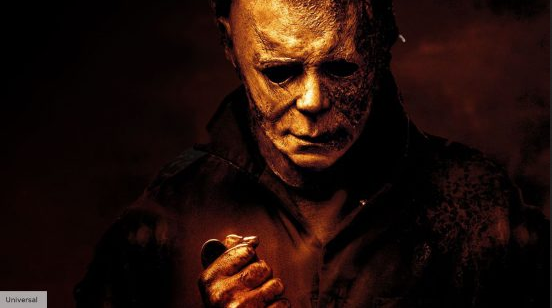Halloween, directed by John Carpenter, set a high standard for horror movies and became a timeless classic. Since then, numerous films have followed in its footsteps, but none have come close to capturing the same magic. David Gordon Green’s 2018 revival of Halloween showed promise, successfully blending humor, suspense, and thrilling kills. However, with the release of Halloween Ends, the concluding film in Green’s trilogy, fans were left with a sense of disappointment. Let’s explore the reasons behind this letdown and how Halloween Ends fails to live up to its predecessors.
A Promising Start, But a Downhill Journey: Halloween Ends begins with a strong opening scene and an impressive first kill. Unfortunately, this early success is short-lived. The movie takes place years after the events of Halloween Kills, with Laurie Strode (Jamie Lee Curtis) and her granddaughter Allyson (Andi Matichak) trying to move on from the trauma inflicted by Michael Myers. While the concept seems intriguing, the execution is flawed.
A Jumbled Mix of Genres: Halloween Ends attempts to incorporate various genres within its two-hour runtime. It starts as an indie drama, transitions into a coming-of-age romance, and ends as a rushed Halloween film. While each concept holds potential, cramming them all into one movie creates a disjointed experience. As viewers, we find ourselves constantly questioning the purpose and direction of the film. Laurie’s memoir narratives, intended as a connective device, feel out of place and distract from the overall story.
Disconnected Tone and Quality: Despite being a trilogy with a single director, the Halloween films feel disconnected. Unlike the Star Wars saga, which faced challenges due to different directors with distinct visions, this trilogy had one consistent creative force. Yet, the movies vary greatly in terms of quality and tone. Halloween Ends overcompensates for previous criticism by reducing the presence of the killer, leading to a lack of tension. Additionally, it doubles down on exploring the meaning of evil in Haddonfield, but fails to deliver a cohesive narrative.
Missed Opportunities and Underwhelming Execution: Halloween Ends falls short in several areas. It squanders potential by withholding kills and awkwardly cutting away from the few that do occur. By doing so, it alienates both fans who craved gore and violence and those who wanted a deeper exploration of evil. This lack of balance proves to be the movie’s downfall, frustrating viewers who were expecting a satisfying conclusion to the troubled trilogy.
The End of an Era: In the end, Halloween Ends lives up to its namesake, effectively bringing an end to the franchise’s revival. Sadly, it seems likely that this disappointing conclusion will lead to a long hiatus before any future attempts are made. The movie fails to recapture the essence of John Carpenter’s original masterpiece, leaving fans disheartened and longing for a revitalization that never materialized.
Conclusion: Halloween Ends had the potential to conclude David Gordon Green’s Halloween trilogy on a high note. However, it disappoints fans with its jumbled mix of genres, disconnected tone, and underwhelming execution. The movie fails to live up to the greatness of its predecessors and ultimately marks the demise of the franchise’s revival. As audiences leave the theaters, it becomes clear that Halloween Ends is a mercy kill, putting an end to a once-promising series and leaving fans eagerly waiting for the next revival in the years to come.

